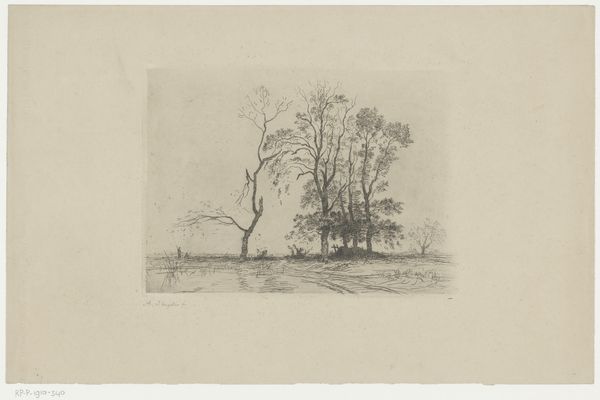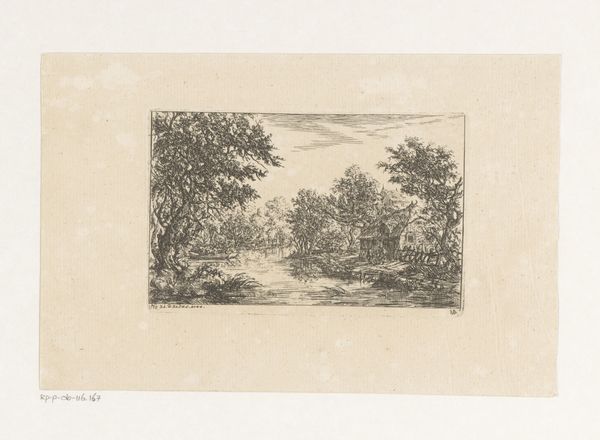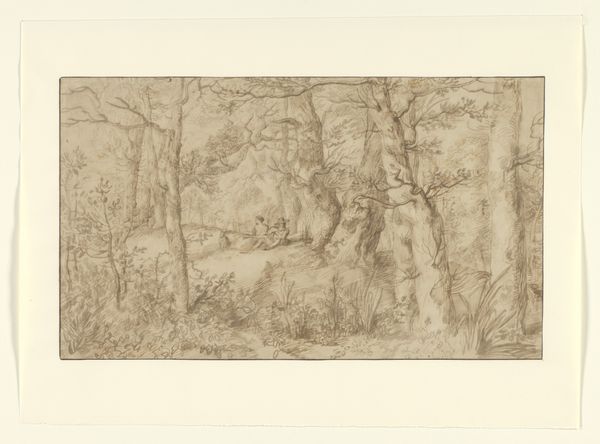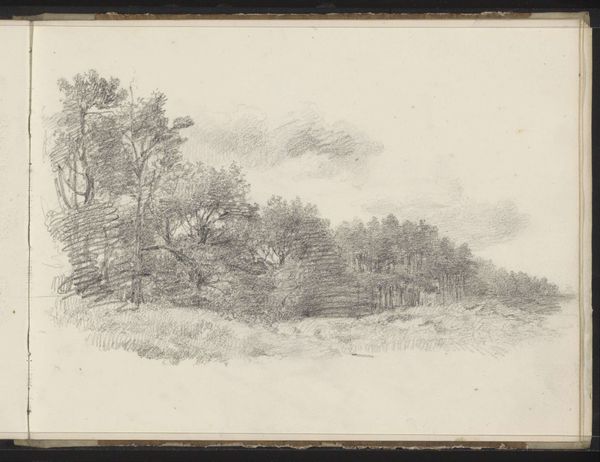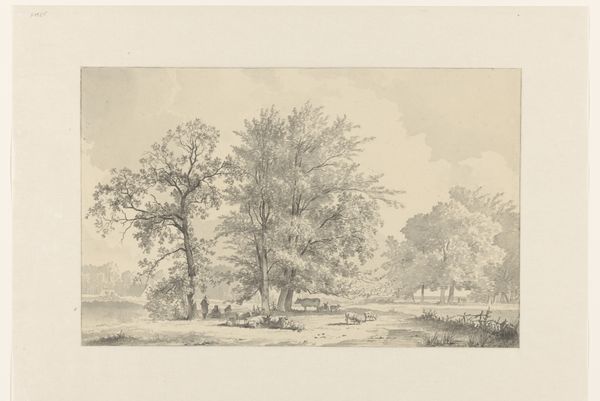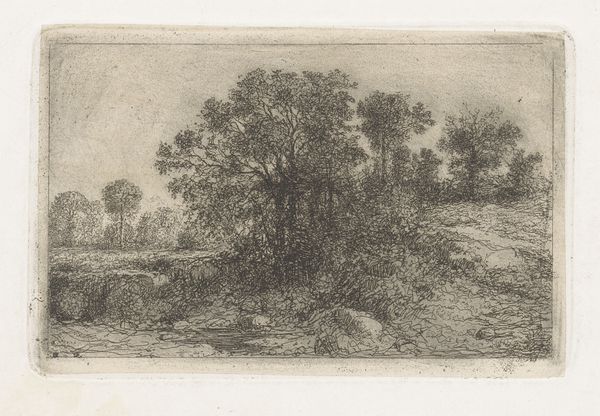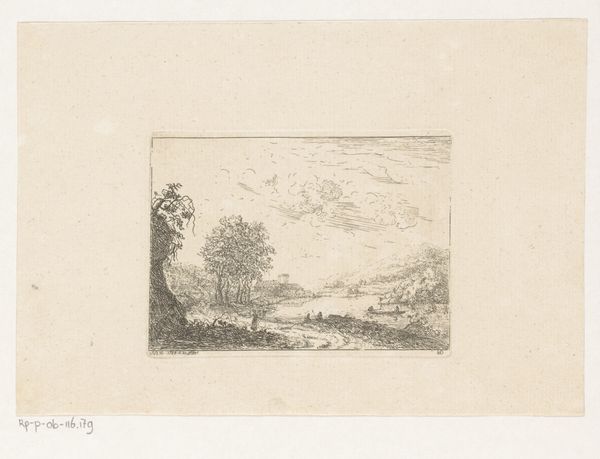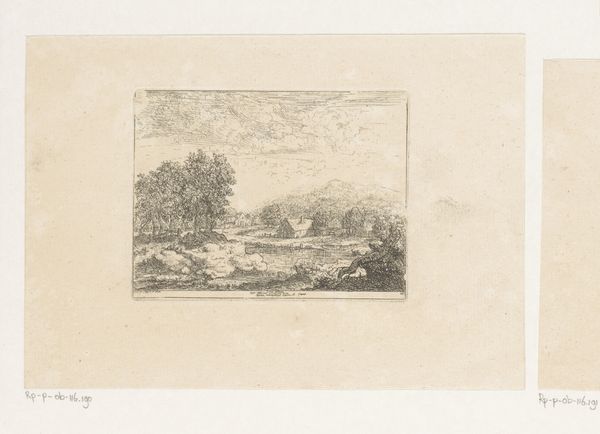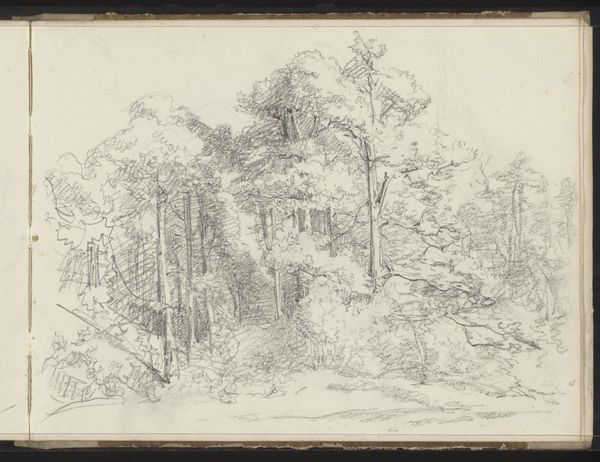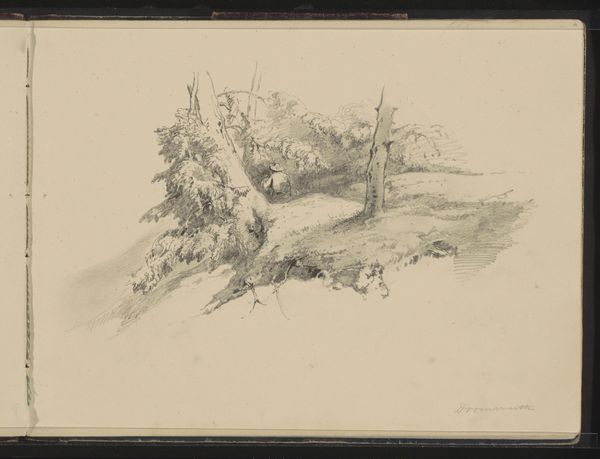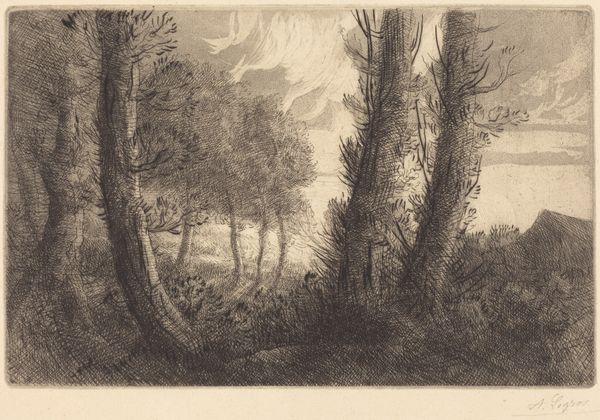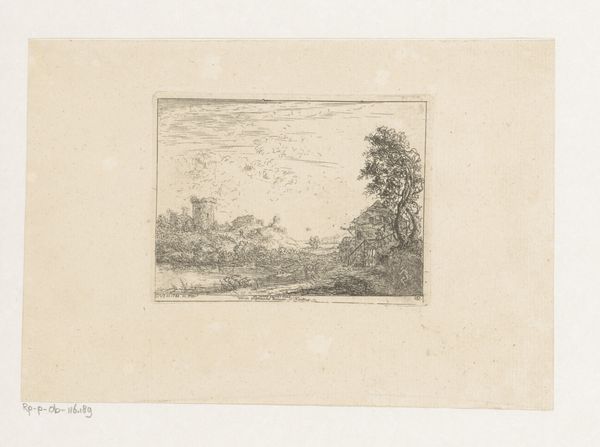
drawing, plein-air, paper, pencil
#
pencil drawn
#
drawing
#
plein-air
#
pencil sketch
#
landscape
#
paper
#
pencil
#
watercolour illustration
#
natural palette
#
realism
Dimensions: height 158 mm, width 298 mm
Copyright: Rijks Museum: Open Domain
Curator: Upon initial viewing, I get the impression of a calm forest bathed in diffused light, a quiet natural space. Editor: Indeed. We're looking at a pencil drawing titled "Bosgezicht te Klarenbeek," created sometime between 1825 and 1868 by Jan Frederik Tack. It’s currently part of the Rijksmuseum's collection, and quite a striking example of plein-air drawing. Curator: Plein-air, you say? You can feel it. There’s an honesty to the sketch, a certain unpretentious intimacy, don't you think? The details in the trees, but particularly the cloud formation on the left - lovely. Editor: Absolutely. Tack's ability to capture light and texture using just a pencil is remarkable. This drawing embodies the spirit of direct observation that defined much of 19th-century landscape art, especially in the Netherlands. There was this newfound cultural push to depict landscapes truthfully. Curator: There is truth here, though not the aggressive "truth" some might be expecting from the period. Something feels deeply dreamlike. Even melancholic. Note how much space is devoted to the sky; it dominates and fills up so much of the surface area, rendering it, by contrast, heavy and sobering. It gives the woods the quality of floating gently against the ether. Editor: A compelling interpretation. But could that openness speak to the increasing importance being given to landscapes? It does highlight the interplay between art and the public's increasing connection with the natural world during that era. The natural palette does give an almost monochromatic appeal, like an echo from the silver age of Dutch painting Curator: Perhaps a cultural expression of appreciation of the sublime, indeed. Though, for me, I cannot help but interpret it with sadness and the ephemeral—what would have this very scene looked like a decade, or a century, later? Editor: That sense of change is powerful. I can almost hear the quiet rustle of the trees, feeling both the promise and inevitable passage of time, and the socio-political forces changing the rural landscapes themselves. Curator: It makes one wonder, what realities do we impress upon the canvas of the landscape today?
Comments
No comments
Be the first to comment and join the conversation on the ultimate creative platform.
